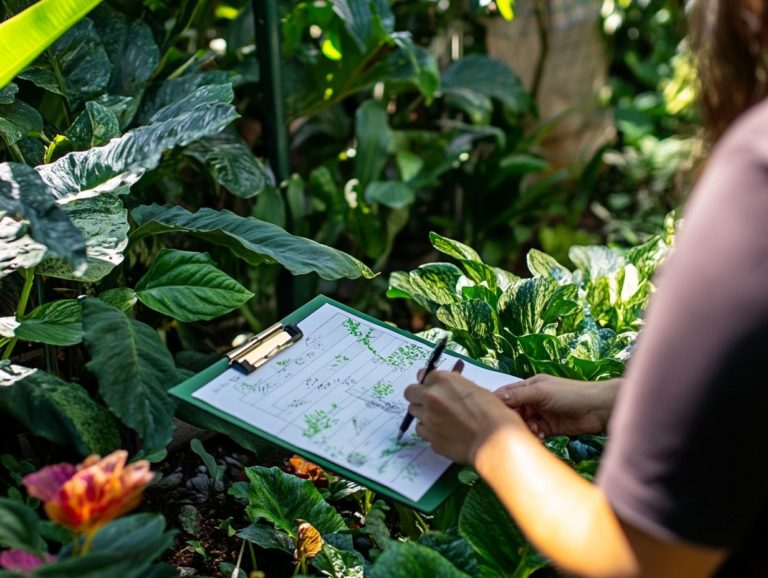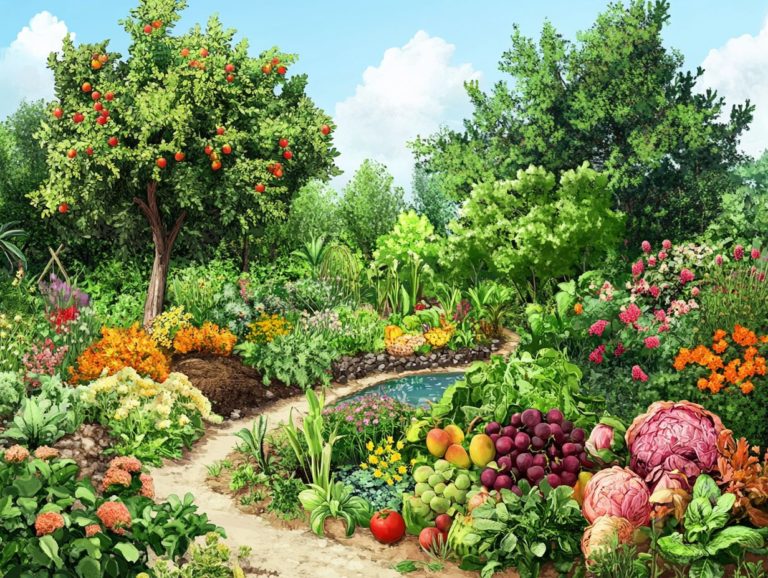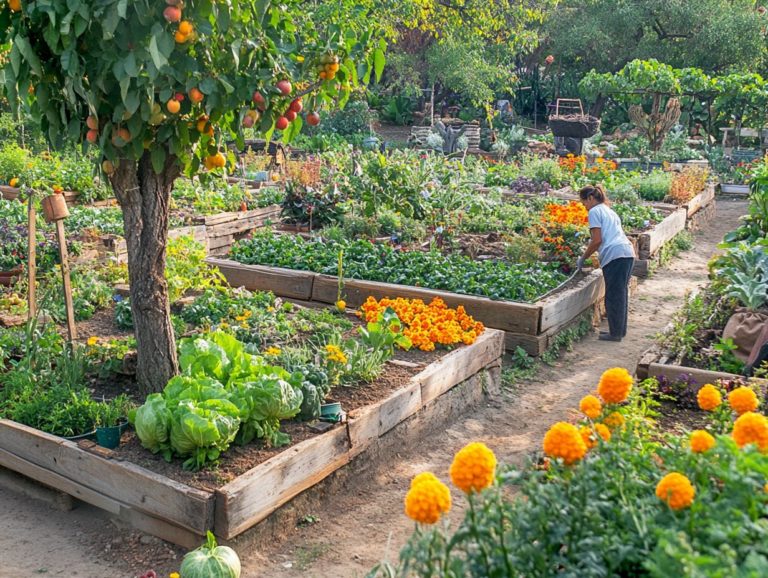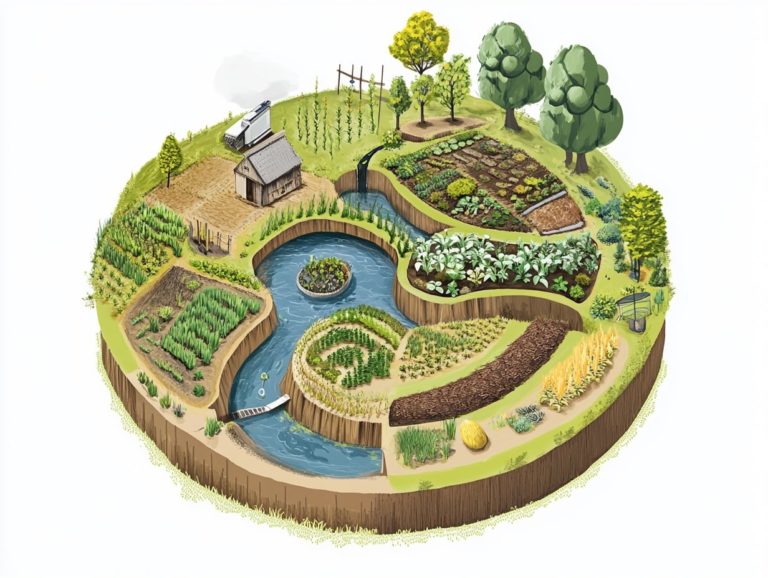The Function of Zones in Permaculture Gardening
Permaculture gardening transcends mere planting; it invites you to craft a harmonious ecosystem that aligns seamlessly with nature.
A cornerstone of this sustainable approach is the concept of zones. This principle empowers you to optimize both space and resources with finesse. This guide delves into the essence of permaculture gardening, illuminating the significance of zones and the myriad benefits they provide for plant growth and vitality.
You’ll uncover practical tips for designing and maintaining these zones, complemented by inspiring real-life examples. Whether you re a seasoned gardener or embarking on this journey for the first time, this guide provides you with valuable insights to elevate your gardening experience.
Contents
Key Takeaways:
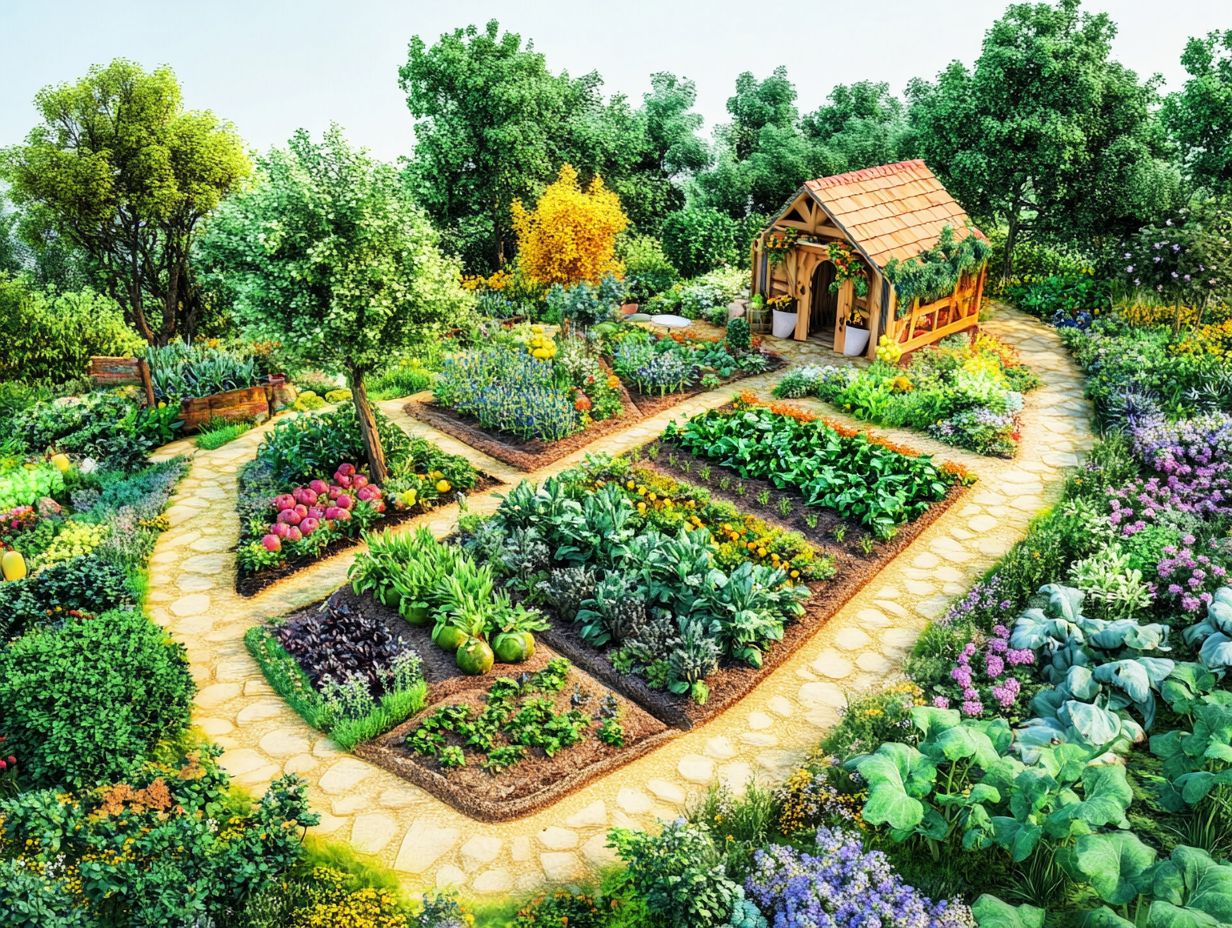
- Permaculture gardening is a holistic approach that focuses on sustainable practices and mimicking natural ecosystems.
- Zones in permaculture gardening help to efficiently utilize space and resources, leading to improved plant growth and health.
- When designing zones, consider factors such as sun exposure, water availability, and plant needs to create a successful and sustainable permaculture garden.
What is Permaculture Gardening?
Permaculture gardening is your gateway to designing sustainable and self-sufficient agricultural systems that embrace designing with nature in mind and biodiversity. You ll love how this approach lets you work in harmony with natural patterns and cycles, crafting environments that satisfy human needs while enhancing local wildlife habitats.
By integrating diverse gardening techniques and sustainable solutions, permaculture fosters resilience, minimizes waste, and cultivates community engagement through shared knowledge and resources.
Originally developed in the 1970s by Bill Mollison and David Holmgren, permaculture builds on traditional agricultural methods while incorporating modern science to create systems that emulate natural ecosystems and support animal husbandry.
Its essential principles include observing and interacting with your environment, utilizing renewable resources, and designing for multiple functions all of which help urban areas become greener and more sustainable.
Now is the time to adopt permaculture practices they re vital for our future! You can boost biodiversity, create habitats for pollinators, and mitigate the impacts of urbanization. By embracing these practices, you not only enhance food security within your community but also contribute to a healthier planet for generations to come.
The Role of Zones in Permaculture Gardening
The concept of permaculture zones stands as a key design strategy, enabling you to optimize your property layout by organizing areas based on human use and ecological priorities.
This systematic approach, often referred to as zone mapping, enhances the efficiency of resource utilization, fosters biodiversity, and simplifies crop management.
By strategically placing plants and design elements according to their specific needs and functions, you can create a thriving ecosystem that works in harmony with nature, facilitating the growth of native plants and enhancing biodiversity.
Unlock the Power of Zones in Your Garden!
Grasping the concept of permaculture zones is crucial for you as an aspiring gardener eager to craft a sustainable and efficient system. Each zone signifies a different level of human interaction and ecological engagement, ranging from the most frequently utilized areas, like your vegetable gardens, to wilder spaces set aside for wildlife observation or habitat restoration.
By employing base mapping techniques, you can effectively identify and organize these zones according to their unique characteristics and functions. Zone 1 typically comprises the intensively managed areas, such as herb gardens or greenhouses, where you engage regularly. Zone 2 might include larger vegetable plots that need less frequent attention, while Zone 3 could host orchards or staple crops. As you venture outward, Zones 4 and 5 evolve into more natural habitats, fostering biodiversity and wildlife conservation.
Understanding these distinctions enables you to plan a balanced ecosystem that nurtures both productivity and ecological health.
Start your permaculture journey today and transform your garden into a flourishing ecosystem!
Benefits of Using Zones in Permaculture Gardening
The benefits of utilizing zones in permaculture gardening are extensive, elevating both efficiency and ecological well-being. Thoughtfully organizing your gardening practices optimizes your use of space and resources, fostering healthier plant growth.
This smart strategy helps a variety of native plants and crops thrive, making your garden a vibrant place to explore. It contributes to developing a food forest that creates a productive garden ecosystem.
Efficient Use of Space and Resources
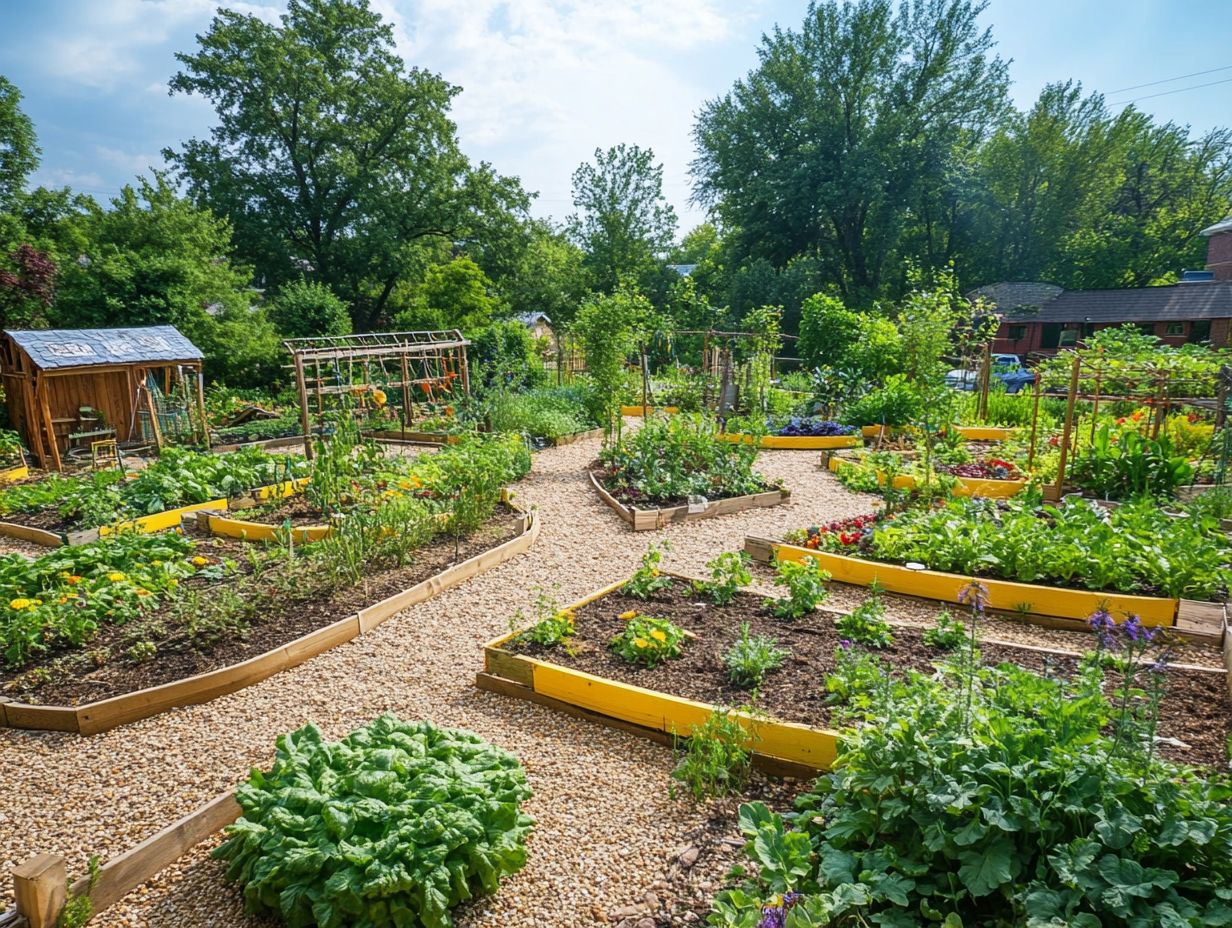
Utilizing space and resources effectively is at the heart of permaculture gardening. Every element serves a purpose and enriches the overall ecosystem. Thoughtful planning and the integration of permaculture principles, such as companion planting and zone mapping, maximize yield while minimizing waste.
One remarkable aspect of permaculture is how it fosters a harmonious landscape where plants and animals collaborate beautifully. By incorporating guilds groups of plants that help each other grow you enhance biodiversity and optimize your available space.
Techniques like vertical gardening enable even the smallest plots to thrive, using height to grow crops like peas and tomatoes alongside ground-level plants.
Employing mulch curbs water evaporation and boosts soil health by nurturing beneficial microorganisms. These practices elevate productivity while contributing to soil regeneration, improving water retention, and reducing the need for chemical fertilizers, reinforcing ecological balance.
Improved Plant Growth and Health
Improved plant growth and health are direct benefits of implementing well-defined permaculture zones. These zones cater specifically to the needs of various plants. By using targeted gardening techniques like crop rotation and enhancing biodiversity, you create a more resilient environment that encourages thriving plant life.
This method optimizes your space and boosts soil fertility while minimizing pest issues. Strategically placing taller plants to provide shade for smaller varieties known as companion planting enriches the ecosystem, promotes beneficial insect populations, and reduces reliance on chemical inputs.
Incorporating mulch and cover crops in designated zones helps improve moisture retention and suppress weeds, crafting a nurturing atmosphere for diverse flora. Act now to focus on these interconnected relationships and watch your garden transform!
How to Design Zones in Permaculture Gardening
Designing effective zones in permaculture gardening requires a nuanced approach that considers several key factors, such as property boundaries, human usage patterns, and surrounding ecological conditions. This process demands meticulous observation and strategic planning, ensuring that each zone operates in harmony within the larger system while addressing the distinct needs of both plants and wildlife.
Factors to Consider
When designing zones in permaculture gardening, several critical factors come into play for a successful outcome. Consider human use patterns, the existing layout of your property, and the specific needs of both plants and wildlife. These elements contribute to a well-structured and efficient system.
Don t underestimate the influence of environmental conditions like climate, soil quality, and water availability. These factors significantly impact plant health and productivity.
How you arrange your space matters immensely; it can optimize sunlight exposure and encourage beneficial interactions among different species.
By observing these elements and tailoring your design, you can cultivate a harmonious ecosystem that supports sustainable living. This approach maximizes resource efficiency while minimizing environmental impact, ensuring your gardening efforts are both effective and responsible.
Examples of Zone Designs
You ll find a wealth of examples in permaculture gardening that highlight innovative zone designs, reflecting sustainable living and community engagement. Consider urban permaculture initiatives that breathe new life into cityscapes or private gardens that prioritize biodiversity.
These real-life permaculture gardens serve as exemplary models for effective garden area planning, inspiring anyone looking to enhance their own green spaces.
Real-life Permaculture Gardens
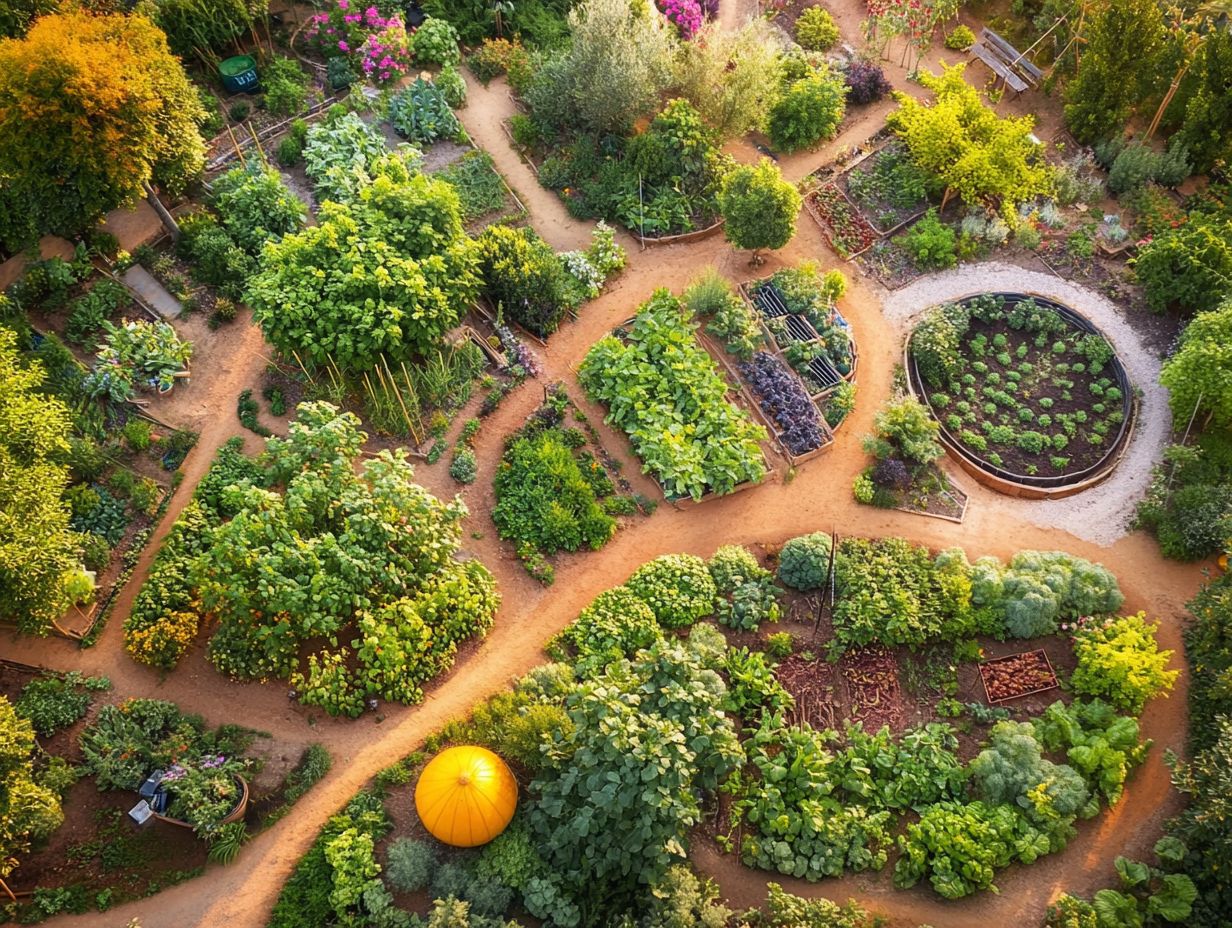
Real-life permaculture gardens offer invaluable insights into the practical application of zone design. Whether they are urban permaculture projects or rural farmsteads, these gardens showcase how effective planning can enhance biodiversity and create sustainable living environments.
In urban settings, community gardens illustrate how even small spaces can significantly contribute to local food systems while fostering social connections among residents. Rural permaculture farms, like those found in Patagonia, exemplify the integration of traditional farming techniques with modern ecological practices, emphasizing soil health and water conservation.
Each design uniquely addresses specific environmental challenges, whether it s maximizing space or improving soil quality. These gardens inspire and educate, showing you how to make a difference in your own backyard.
Tips for Maintaining Zones in Permaculture Gardening
Maintaining distinct zones in permaculture gardening is vital for long-term success and sustainability. By consistently applying gardening techniques and regularly observing the evolving dynamics of each zone, you can adapt to changing conditions and cultivate a thriving ecosystem that supports both biodiversity and your needs.
This approach helps you create a balance where nature thrives, allowing you to reap the benefits of your efforts.
Key Strategies for Long-term Success
Key strategies for achieving long-term success in maintaining permaculture zones revolve around observation, adaptation, and community engagement. By continually evaluating the health and productivity of each zone, you can implement sustainable solutions that meet your needs while enhancing the overall ecosystem.
This ongoing assessment allows you to identify which plants thrive together and how to optimize soil health. Techniques like companion planting, which involves growing different plants together for mutual benefits, mulching, and crop rotation can dramatically boost biodiversity, fostering natural pest control and improving soil fertility.
Engaging with local communities and sharing knowledge through workshops or cooperative gardens helps cultivate a robust network of support and innovation. This collaborative approach not only strengthens resilience but also amplifies the impact of your sustainability efforts, transforming your personal garden into a thriving ecosystem that benefits both you and the planet.
Frequently Asked Questions
What are the zones in permaculture gardening?
The zones in permaculture design are a way to organize and manage different areas of a garden based on their functions and proximity to the gardener’s home or main hub.
How many zones are there in permaculture gardening, and what is their purpose?
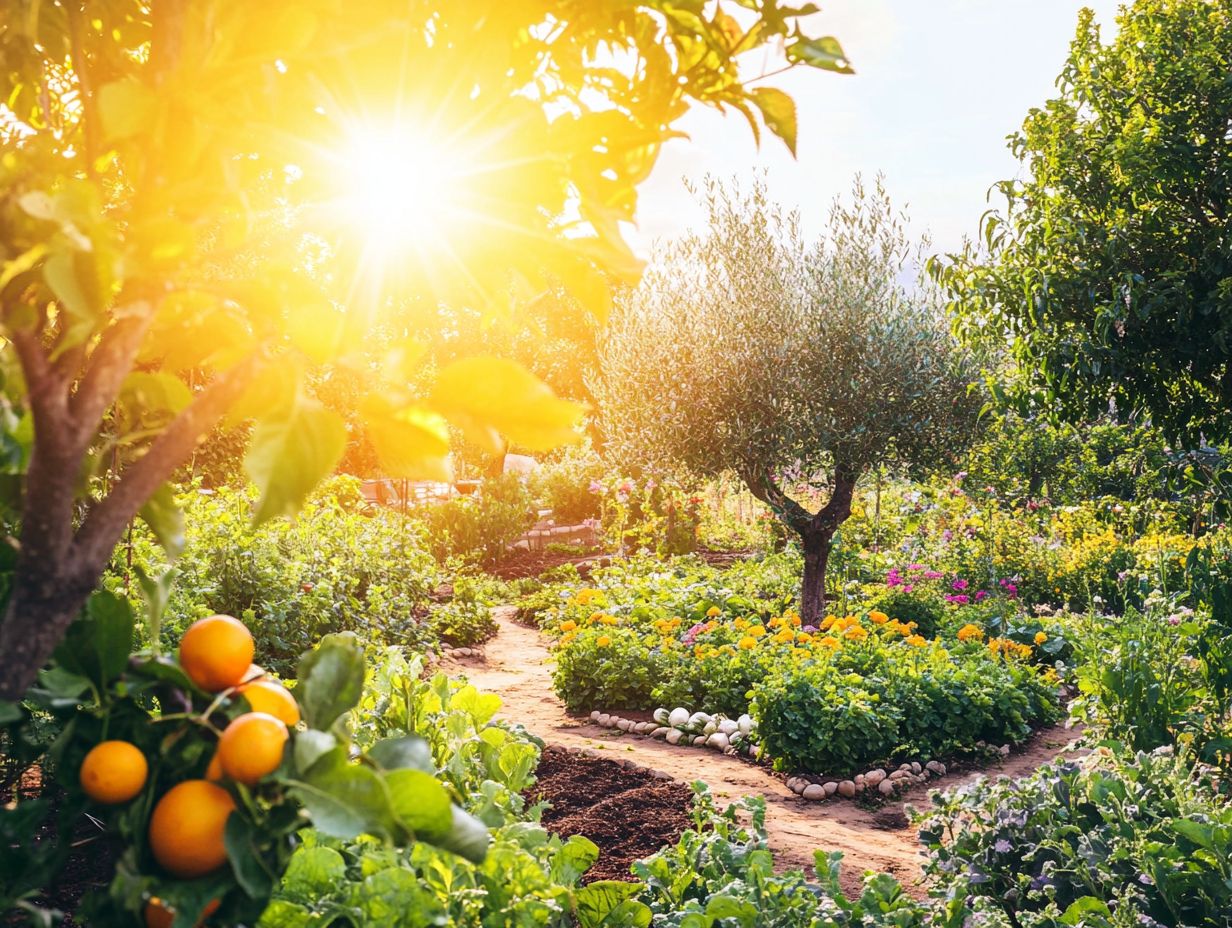
There are typically six zones in permaculture gardening, each representing a different level of human involvement and management. The purpose of using zones is to maximize efficiency and productivity by placing plants and elements in the most appropriate areas based on their needs and the gardener’s needs.
What are some examples of elements that can be found in each zone?
In zone 1, the closest to the home, you may find high-maintenance plants, herbs, and vegetables that require frequent attention. In zone 6, the farthest away, you may have large trees or grazing animals that require minimal management.
Ready to transform your garden? Start planning your zones today!
How Can Zones Benefit Permaculture Gardening?
Using zones makes permaculture gardening more sustainable and self-sufficient. This method focuses resources and energy on the most productive areas, reducing unnecessary travel and labor.
Can You Change the Zones in Permaculture Gardening?
Yes! You can modify the zones to fit your gardening needs and adapt to changing conditions. This flexibility helps your garden thrive over time.


